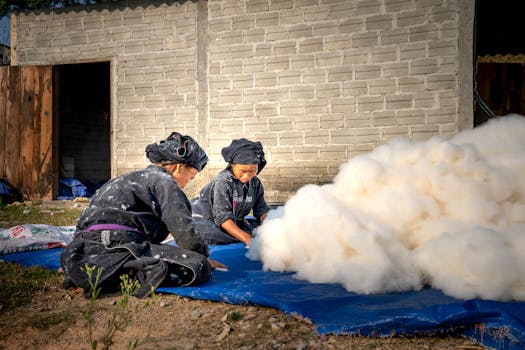
Empowering Communities: The Role of Women in Africa’s Fiber Production
Empowering Communities: The Role of Women in Africa’s Fiber Production. The role of women in Africa’s fiber production is a vital component of community empowerment, providing economic opportunities and promoting sustainable development. Across the continent, women are engaged in various aspects of fiber production, from farming and harvesting to processing and manufacturing. This article explores the significance of women’s participation in Africa’s fiber industry and its impact on community development.
In many African countries, fiber production is a significant sector, providing income and employment opportunities for millions of people. Women, in particular, play a crucial role in this industry, as they are often responsible for farming, harvesting, and processing fiber crops such as cotton, jute, and sisal. According to the Food and Agriculture Organization (FAO) of the United Nations, women contribute up to 80% of the labor force in African agriculture, including fiber production.
Women’s Participation in Fiber Production
Women’s participation in fiber production is not limited to farming and harvesting. They are also involved in various stages of processing, including spinning, weaving, and knitting. In some communities, women have formed cooperatives to pool their resources and skills, enabling them to produce high-quality fiber products such as textiles, baskets, and carpets. These cooperatives provide women with a platform to share knowledge, skills, and experiences, promoting collective empowerment and economic growth.
The involvement of women in fiber production has numerous benefits for their communities. It provides them with a source of income, enabling them to support their families and invest in their children’s education and health. Women’s participation in fiber production also promotes sustainable development, as it encourages the use of local resources, reduces reliance on external inputs, and preserves traditional skills and knowledge.
Challenges and Opportunities
Despite the significance of women’s participation in Africa’s fiber industry, they face numerous challenges, including limited access to credit, technology, and markets. Women often lack the necessary skills and training to engage in high-value activities such as textile design and production, which limits their earning potential. Additionally, women’s work in fiber production is often undervalued and unrecognized, making it difficult for them to assert their rights and interests.
However, there are also opportunities for women in Africa’s fiber industry. The growing demand for sustainable and eco-friendly products provides a market niche for women’s fiber products. Furthermore, initiatives such as the African Continental Free Trade Area (AfCFTA) and the African Women’s Development Fund (AWDF) offer opportunities for women to access new markets, technologies, and resources.
Conclusion
In conclusion, the role of women in Africa’s fiber production is vital for community empowerment and sustainable development. Women’s participation in this industry provides economic opportunities, promotes traditional skills and knowledge, and encourages the use of local resources. However, women face numerous challenges, including limited access to credit, technology, and markets. Addressing these challenges and leveraging opportunities such as the growing demand for sustainable products can help to empower women and promote the development of Africa’s fiber industry.